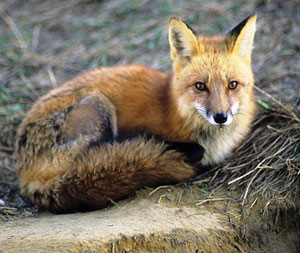Habitat
The red fox’s habitat covers most of the United States, Canada,
Europe, Australia, and the northern part of Africa (Animal
Diversity Web). Red Foxes are able to cover such a wide variety
of landscapes because they are unspecialized (Baldwin, 2012).
Being unspecialized means the red fox can adapt to many
different types of environments. Some of the landscapes that are
occupied by the red fox are woodlands, mountain ranges,
farmland, and even cities (National Geographic).
Besides being unspecialized, the red fox can
survive in so many areas because they can occupy a habitat as long
as they have enough food, an adequate shelter, and have the ability
to reproduce (Baldwin, 2012). Not only are red foxes unspecialized
when it comes to their habitats, they are also unspecialized when it
comes to food. They are omnivores, which means they eat animals and
vegetables (Bluett, 1984). This gives them the ability to live in
places like cities and high altitudes like mountain ranges.
An individual fox will live in an area that
covers anywhere from 150 acres to 400 acres, this is called their
home range (Bluett, 1984). Their territory size depends on what they
need to survive (Baldwin, 2012). Usually a small territory would be
a woodland area and a large territory would be an agricultural area
(Bluett, 1984). A single fox or a monogamous pair will occupy a
single territory. The territories that each red fox establishes will
never over lap with another red foxes territory (Bluett, 1984).
Depending on the different environments that
the red fox lives in depends on the other animals the red fox will
co-exist with. In general, the red fox will encounter other animals
like deer, coyotes,
small rodents, squirrels, mice, voles, shrews,
owls, other
predatory birds, hedgehogs, porcupines, and humans
(Baldwin, 2012). In addition, the red fox will encounter many types
of plants as well.

